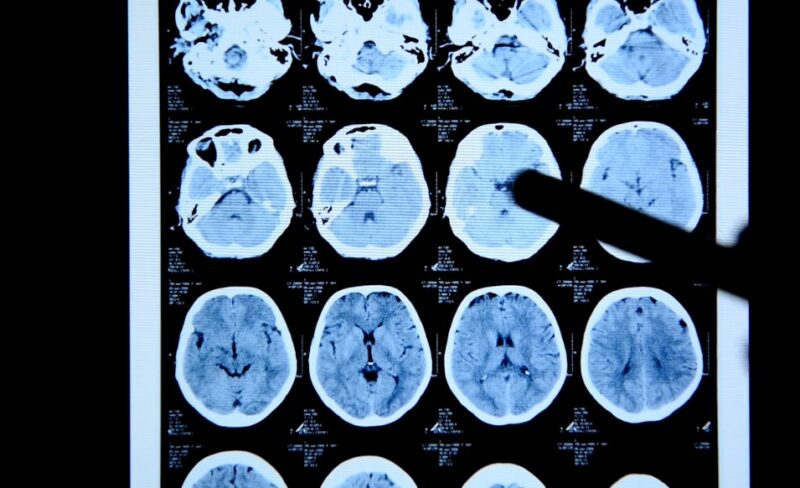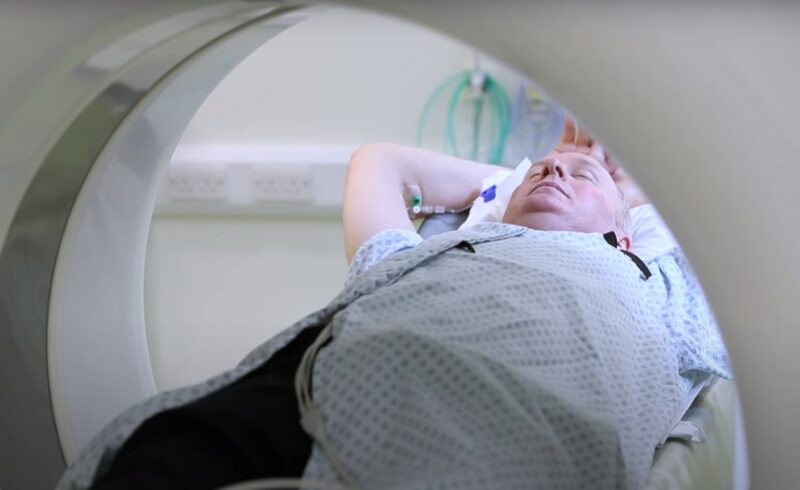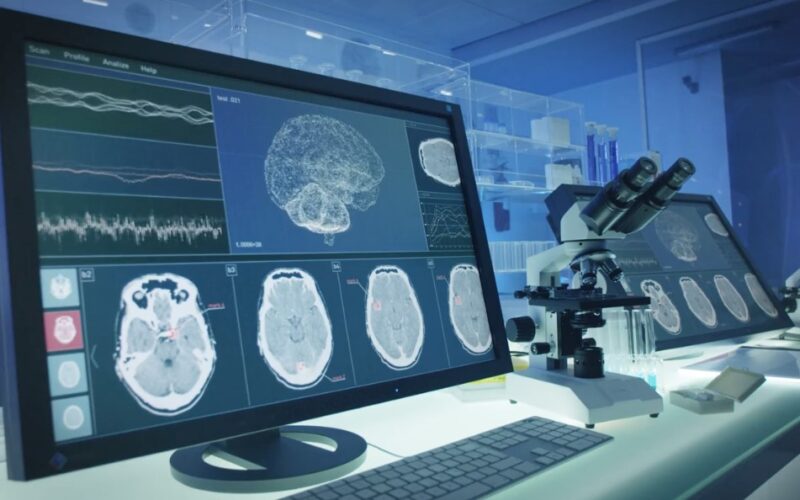Concussions, the invisible injuries of the brain, often leave individuals puzzled, concerned, and seeking clarity about their condition. In the quest for answers, one critical question arises: Can a CAT scan identify if you have had a concussion?
Computed Axial Tomography (CAT) scans, also known as CT scans work by taking a series of X-ray views at various angles to produce cross-sectional images of the bones and soft tissues inside your body. However, we’ll explore whether these scans can help detect concussions.
Key Takeaways
Can CAT Scans Detect Concussions?

The short answer is: Not directly. CAT scans are excellent at detecting fractures, bleeding, or swelling in the brain—conditions that are more common in moderate to severe TBIs. However, concussions often do not result in visible structural damage to the brain, which means they typically do not show up on these scans.
Despite this, CAT scans are invaluable in emergency settings where quick visualization of potential internal injuries is crucial. If a concussion is suspected, especially in the presence of severe symptoms, doctors may order a CAT scan to rule out more severe injuries such as hemorrhages or contusions.
This is crucial because, although rare, there can be complications that require immediate attention. Furthermore, identifying other types of brain injuries can significantly influence the treatment plan and prognosis.
Why Are They Used Then?
CAT scans thus act as a safety net, ensuring that no stone is left unturned in the assessment of potential brain injuries. They are particularly useful in the acute phase of injury, helping to quickly triage cases that may require surgical intervention.
They serve as a preliminary assessment tool, providing immediate insights that can guide further diagnostic decisions. Their high resolution allows for a clear view of bone and acute bleeding, which can be life-saving in cases of severe head trauma.
Limitations of CAT Scans

The main limitation of CAT scans is their inability to visualize the functional changes in the brain that occur with a concussion. Concussions primarily affect brain function, which doesn’t necessarily translate to structural changes detectable by a CAT scan.
Additionally, the subtle nature of concussions means that the changes are often at a microscopic level, beyond the resolution of current CAT scan technology. This highlights the need for alternative diagnostic tools that can capture the nuances of brain function and the subtle changes that occur with concussions.
Understanding the intricacies of brain conditions, such as the differences between a stroke and a brain aneurysm, further emphasizes the complexity of diagnosing and treating neurological issues.
As technology advances, there is hope for more sophisticated imaging techniques that can bridge this gap.
Alternatives for Concussion Diagnosis
Given the limitations of these scans, healthcare providers often use a combination of methods to diagnose concussions, including clinical evaluation and cognitive testing, which are also crucial in understanding conditions like high blood pressure, and coronary ailments, offering a comprehensive overview of the patient’s condition.
- Clinical Evaluation: A thorough medical history and physical examination, including a neurological exam, are the first steps in diagnosing a concussion. This process often includes detailed questioning about the incident, symptoms experienced, and any previous concussions, providing a comprehensive overview of the patient’s condition.
- Cognitive Testing: Tests to evaluate memory, concentration, and other cognitive functions can help identify impairments. These assessments can be repeated over time to monitor recovery, offering a dynamic view of the patient’s progress.
- Balance Testing: Since concussions can affect balance, tests of one’s stability may be conducted. These tests can be quantitative, using tools like force plates, or qualitative, observing the patient’s ability to maintain or regain balance under various conditions.
- MRI Scans: Magnetic Resonance Imaging (MRI) can sometimes provide more detailed images of the brain and may be used in certain cases, though like CAT scans, they may not always show changes associated with concussions. MRI scans offer the advantage of better soft tissue contrast, which can be crucial in identifying subtle changes in the brain’s structure or in chronic conditions resulting from repeated injuries.
How to Move Forward After a Concussion?
Moving forward after a concussion involves a careful and considered approach to ensure a full and safe recovery. Here are key steps and strategies to help individuals progress through their recovery:
1. Follow Medical Advice

- Seek Immediate Care: Initially, it’s crucial to see a healthcare provider for a proper diagnosis and personalized recovery plan.
- Rest: In the first few days following a concussion, physical and mental rest is very important to reduce symptoms and help the brain heal.
- Follow-Up Visits: Attend all follow-up appointments to monitor your recovery and address any ongoing or new symptoms.
2. Gradual Return to Activities
Slowly and gradually return to daily activities as recommended by your healthcare provider. Avoid activities that risk another concussion. Initially, you may need to modify your workload or school assignments.
Discuss adjustments with your employer or school to accommodate your recovery needs. Incorporate light physical activity as advised by your healthcare provider, avoiding contact sports or activities that could lead to another head injury.
3. Monitor Symptoms
Keep track of your symptoms. Tracking your symptoms can help your healthcare provider adjust your treatment plan as needed. Seek immediate medical attention if you experience worsening symptoms, such as increased confusion, repeated vomiting, seizures, or any symptoms that concern you.
4. Cognitive Rest

Reduce exposure to screens, including smartphones, computers, and television, as they can strain your brain. Alcohol and recreational drugs can slow recovery and should be avoided. Consult your doctor before taking new medications or supplements.
5. Support System
Share information about concussions with your close contacts so they understand your needs and limitations. It’s common to experience emotional changes after a concussion. Talk to friends, family, or a professional if you’re feeling depressed, anxious, or overwhelmed.
6. Rehabilitation Therapies
- Physical Therapy: This may be recommended if you have balance issues or dizziness.
- Cognitive Therapy: Helps if you’re experiencing memory, concentration, or other cognitive issues.
- Occupational Therapy: Assists in regaining the skills needed for daily living and returning to work or school.
7. Healthy Lifestyle Choices

Eat a balanced diet rich in fruits, vegetables, lean proteins, and whole grains to support brain health. Stay well-hydrated with water throughout the day. Ensure you get enough sleep, as it plays a critical role in healing the brain.
8. Be Patient and Positive
Recovery from a concussion can vary greatly among individuals. It’s important to be patient with your progress and maintain a positive outlook. Healing takes time, and rushing the process can lead to setbacks.
FAQs
What is the difference between a concussion and a traumatic brain injury (TBI)?
A concussion is a form of traumatic brain injury (TBI), specifically classified as a mild TBI. While all concussions are TBIs, not all TBIs are concussions. TBIs can range from mild to severe, with concussions on the milder end, typically without visible brain damage on imaging tests.
How long after a head injury should I wait before getting a CAT scan?
The timing for a CAT scan after a head injury depends on the symptoms. For severe symptoms such as loss of consciousness, severe headache, vomiting, or confusion, immediate medical attention is necessary, and a CAT scan may be performed promptly.
In cases with mild symptoms, a healthcare provider may recommend observation and only suggest a CAT scan if symptoms worsen.
Can a CAT scan show past concussions?
No, they can’t, especially if the person has fully recovered. They are designed to identify acute (current) conditions such as bleeding, fractures, or swelling and cannot detect the functional changes associated with a past concussion.
Are there any risks associated with getting a CAT scan for a concussion?
While these scans are generally safe, they do expose patients to a small amount of radiation. The risk from this radiation exposure is considered minimal compared to the benefits of diagnosing serious conditions. However, healthcare providers weigh the benefits and risks before recommending a CAT scan.
Can children have CAT scans if a concussion is suspected?
Yes, they can, but healthcare providers are particularly cautious about exposing children to radiation. They will recommend it for a child only if the symptoms are severe or if there is a need to rule out more serious injuries.
If my CAT scan is clear, does that mean I didn’t have a concussion?
A clear scan means there are no visible structural damages like fractures or bleeding in the brain, but it does not rule out a concussion. Concussions affect the brain’s function, which CAT scans cannot visualize. Diagnosis relies on a combination of symptoms, medical history, and possibly other tests.
Summary
While CAT scans are a valuable tool in the medical arsenal, their role in diagnosing concussions is primarily to rule out more severe injuries. The journey to understanding and recovering from a concussion involves a comprehensive approach that encompasses clinical evaluation, cognitive and balance testing, and sometimes MRI scans.
If you suspect you’ve had a concussion, seeking prompt medical attention is the first step to recovery. With the right care, most people make a full recovery, stepping back into their lives with confidence and resilience.
